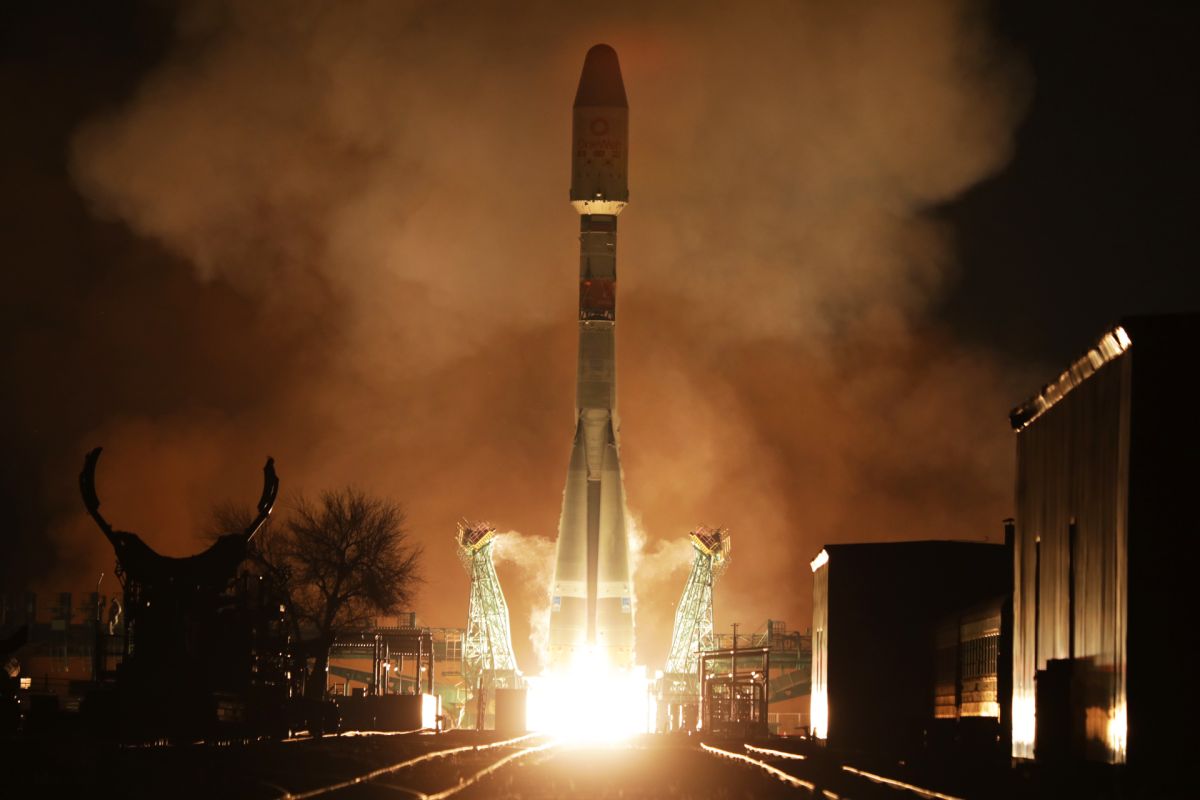The outcome was expected, but the visuals are still dramatic. On Friday (March 4), Russia removed a Soyuz rocket topped with 36 OneWeb internet satellites from its launch pad at Baikonur Cosmodrome in Kazakhstan, which is managed jointly by the Russian Aerospace Forces and Roscosmos, Russia’s federal space agency. The Soyuz was originally supposed to lift off on Friday, but its mission became a casualty of Russia’s ongoing invasion of Ukraine. Roscosmos demanded, as conditions of launch, that OneWeb guarantee the satellites would not be used for military purposes and…
Read MoreMonth: March 2022
The Large Hadron Collider will explore the cutting edge of physics after 3-year shutdown
A data visualization of particle collisions at the LHC at CERN. (Image credit: CERN) Scientists are gearing up to once more push the boundaries of the cutting edge of particle physics with the reopening of the Large Hadron Collider (LHC) at CERN near Geneva, Switzerland after a three-year shutdown. After its successful second run ended in December of 2018, the LHC was purposefully shut down for updates while teams prepared for Run 3, which is set to begin soon, as the new run will begin this spring (earlier reports from…
Read MoreSpace Station Science Highlights: Week of February 28, 2022
Crew members aboard the International Space Station conducted scientific investigations during the week of Feb. 28 that included testing technology for processing glass fibers, examining the behavior of foams in microgravity, and characterizing biofilms in space.
Read MoreThis Week’s Sky at a Glance, March 4 – 12
Evenings see the crescent Moon return, Sirius at its peak in the south, and the Dipper and Cassiopeia in balance toward the north. For planets, look to the dawn. The post This Week's Sky at a Glance, March 4 – 12 appeared first on Sky & Telescope.
Read More“Closest Black Hole” Doesn’t Exist, After All
Astronomers combined forces to confirm that a black hole proposed to lie a mere 1,000 light-years away isn’t really there. The post “Closest Black Hole” Doesn’t Exist, After All appeared first on Sky & Telescope.
Read MoreNASA to Share Tools, Resources at Upcoming Agriculture Conference
NASA will participate in the 2022 Commodity Classic conference, America’s largest farmer-led, farmer-focused educational and agricultural experience.
Read MoreRussia stops rocket engine sales to US as space cooperation frays
The decades-old space partnership between Russia and the West may be going up in smoke, another victim of the invasion of Ukraine. Early Thursday morning (March 3), London-based company OneWeb announced that it’s suspending launches of its satellites from the Russia-run Baikonur Cosmodrome in Kazakhstan. The decision came after Russia’s federal space agency, Roscosmos, announced it would not launch 36 OneWeb internet satellites as planned on Friday (March 4) unless OneWeb guaranteed that the craft would not be used for military purposes and the United Kingdom government agreed to…
Read MoreNeutron stars release warm winds as they devour companion stars
Neutron stars release powerful warm winds after chowing down on their stellar companions, new research shows. Neutron stars are the remains of more massive stars that reached the end of their lives and exploded in violent supernovas, leaving behind a dense core that continues to collapse in on itself. These stellar corpses are the densest known objects in the universe, aside from black holes, which form when even larger stars die. In some cases, neutron stars have a stellar companion, from which they accrete matter, forming what is also known…
Read More‘Star Trek: Picard’ won’t ‘press forward’ with the synthetic storyline, producer Akiva Goldsman says
The marketing machine for the new season of “Star Trek: Picard” has been working overtime, with Patrick Stewart and the cast doing TV and press interviews, plus poster campaigns have been spotted at Los Angeles international airport and on the New York subway. It’s been almost two years (actually 706 days, just 24 days short of two years) since we last Jean-Luc Picard in action in the … er, somewhat disappointing Season 1 finale “Et in Arcadia Ego, Part 2.” However, it is important to remember that while the first…
Read MoreAmateur Astronomers Team Up to Measure Distance to a Close-passing Asteroid
A small group of amateurs teamed up to measure the parallax, and thus the distance, to a near-Earth asteroid as it passed by our planet. The post Amateur Astronomers Team Up to Measure Distance to a Close-passing Asteroid appeared first on Sky & Telescope.
Read More
